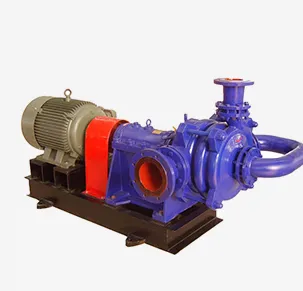Galician
- Afrikaans
- Albanian
- Amharic
- Arabic
- Armenian
- Azerbaijani
- Basque
- Belarusian
- Bengali
- Bosnian
- Bulgarian
- Catalan
- Cebuano
- Corsican
- Croatian
- Czech
- Danish
- Dutch
- English
- Esperanto
- Estonian
- Finnish
- French
- Frisian
- Galician
- Georgian
- German
- Greek
- Gujarati
- Haitian Creole
- hausa
- hawaiian
- Hebrew
- Hindi
- Miao
- Hungarian
- Icelandic
- igbo
- Indonesian
- irish
- Italian
- Japanese
- Javanese
- Kannada
- kazakh
- Khmer
- Rwandese
- Korean
- Kurdish
- Kyrgyz
- Lao
- Latin
- Latvian
- Lithuanian
- Luxembourgish
- Macedonian
- Malgashi
- Malay
- Malayalam
- Maltese
- Maori
- Marathi
- Mongolian
- Myanmar
- Nepali
- Norwegian
- Norwegian
- Occitan
- Pashto
- Persian
- Polish
- Portuguese
- Punjabi
- Romanian
- Russian
- Samoan
- Scottish Gaelic
- Serbian
- Sesotho
- Shona
- Sindhi
- Sinhala
- Slovak
- Slovenian
- Somali
- Spanish
- Sundanese
- Swahili
- Swedish
- Tagalog
- Tajik
- Tamil
- Tatar
- Telugu
- Thai
- Turkish
- Turkmen
- Ukrainian
- Urdu
- Uighur
- Uzbek
- Vietnamese
- Welsh
- Bantu
- Yiddish
- Yoruba
- Zulu
Telephone: +86 13120555503
Email: frank@cypump.com
Ago . 07, 2024 01:10 Back to list
Selection and Maintenance Guide for Single Phase Submersible Sewage Pumps in Residential Applications
Single Phase Sewage Submersible Pump An Essential Solution for Wastewater Management
In the realm of wastewater management, the single phase sewage submersible pump stands out as a vital component. This type of pump is crucial for the efficient handling and disposal of wastewater in both residential and commercial applications. Its design and functionality make it an ideal choice for various scenarios, particularly in situations where gravity drainage is not feasible.
Understanding the Basics
A sewage submersible pump is an electric pump that is designed to be submerged in the fluid it is pumping. Unlike traditional pumps that operate above ground, submersible pumps are placed directly into wastewater pits or tanks. This allows them to effectively lift sewage and effluent to the surface, ensuring proper drainage and disposal. The single phase variant operates on a single-phase power supply, typically 120V or 230V, making it suitable for residential settings and smaller commercial applications.
Design Features
Single phase sewage submersible pumps are engineered with several key features that enhance their performance
1. Durable Construction These pumps are usually made from corrosion-resistant materials such as stainless steel or high-grade plastic, which ensures longevity and reduces maintenance needs.
2. Automatic Operation Many models come equipped with automatic float switches that activate the pump when the water level rises to a predetermined point, allowing for hands-free operation.
3. Efficient Motor The motors in single phase pumps are designed for high efficiency and relatively low energy consumption, making them cost-effective over time.
4. Compact Size Their compact design allows for easy installation in tight spaces, making them suitable for residential basements, septic systems, and other locations where conventional pumps may not fit.
single phase sewage submersible pump

Applications
The utility of single phase sewage submersible pumps is evident across a range of applications
- Residential Use Homeowners use these pumps in basements prone to flooding or as part of septic systems to manage wastewater effectively.
- Commercial Establishments Restaurants, hotels, and manufacturing facilities often employ submersible pumps to manage wastewater, ensuring compliance with health and safety regulations.
- Municipal Applications In many municipalities, these pumps are used in smaller sewage treatment plants and lift stations, playing a critical role in keeping communities safe and clean.
Maintenance and Care
Regular maintenance is essential for the longevity and efficiency of single phase sewage submersible pumps. Users should routinely inspect the motor and electrical components for wear, check for clogs in the impeller, and ensure that the float switch functions correctly. Periodic cleaning can also help prevent sediment build-up, which can affect performance.
Conclusion
In summary, single phase sewage submersible pumps represent a dependable and efficient solution for managing wastewater in a variety of settings. Their robust design, automatic functionality, and adaptability make them a preferred choice for homeowners and professionals alike. As communities continue to grow and the necessity for effective wastewater management increases, these pumps will undoubtedly play a pivotal role in maintaining public health and environmental safety. Investing in a quality single phase sewage submersible pump ensures that both residential and commercial properties can efficiently handle their wastewater needs, contributing to a cleaner and more sustainable future.
-
Horizontal Split Case Pump with GPT-4 Turbo | High Efficiency
NewsAug.01,2025
-
ISG Series Pipeline Pump - Chi Yuan Pumps | High Efficiency, Durable Design
NewsAug.01,2025
-
Advanced Flue Gas Desulfurization Pump with GPT-4 Turbo | Durable & Efficient
NewsJul.31,2025
-
ISG Series Vertical Pipeline Pump - Chi Yuan Pumps | Advanced Hydraulic Design&Durable Construction
NewsJul.31,2025
-
ISG Series Vertical Pipeline Pump - Chi Yuan Pumps | Energy Efficient & Low Noise
NewsJul.31,2025
-
pipeline pump - Chi Yuan Pumps Co., LTD.|High Efficiency&Low Noise
NewsJul.31,2025










